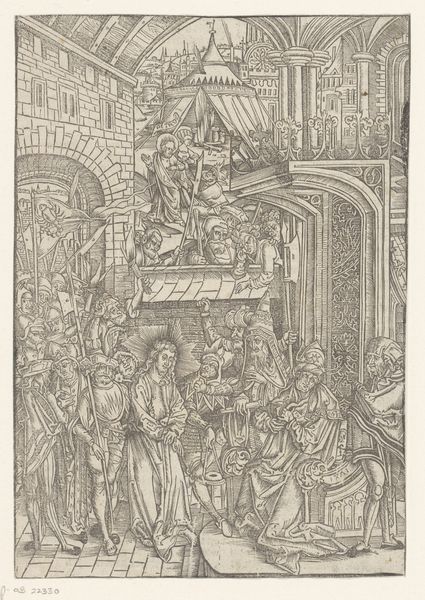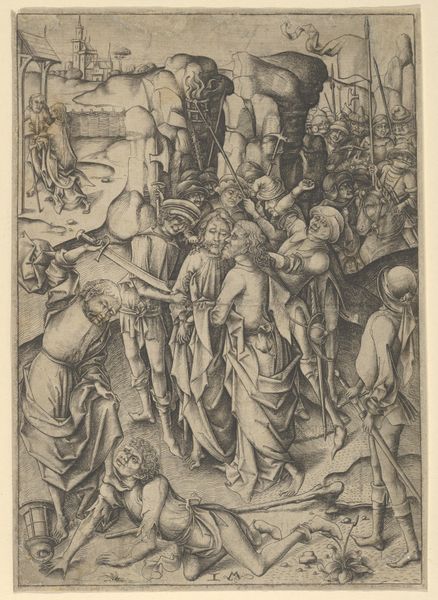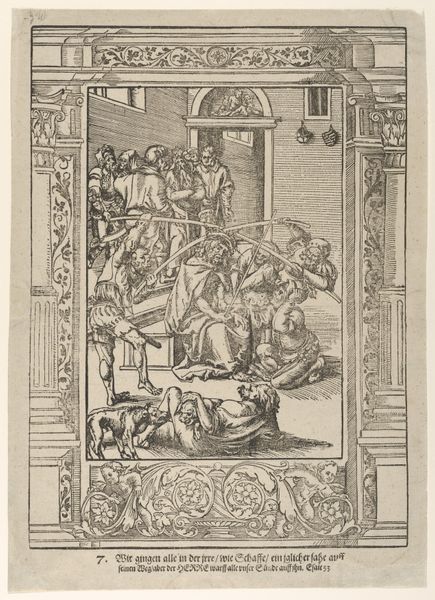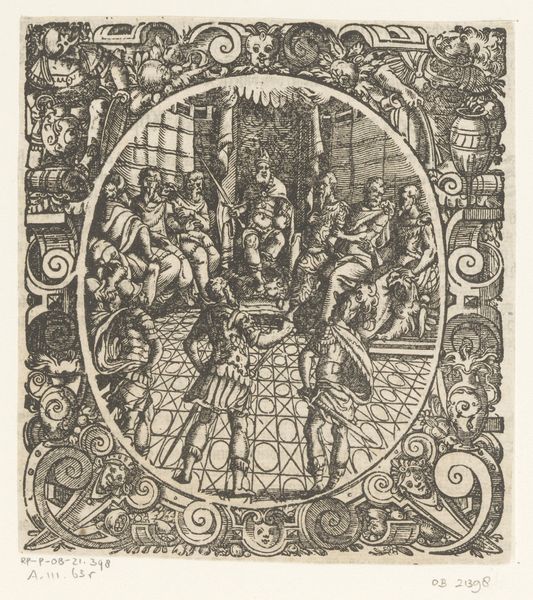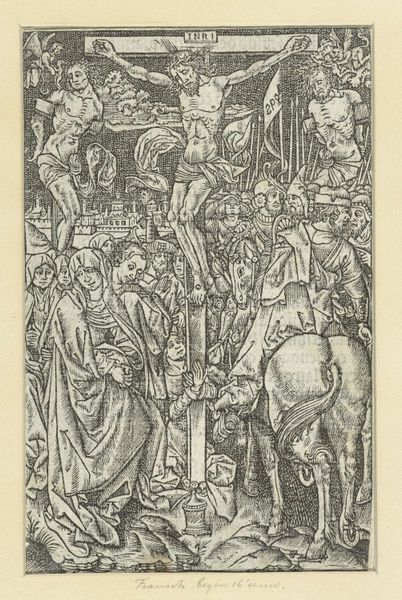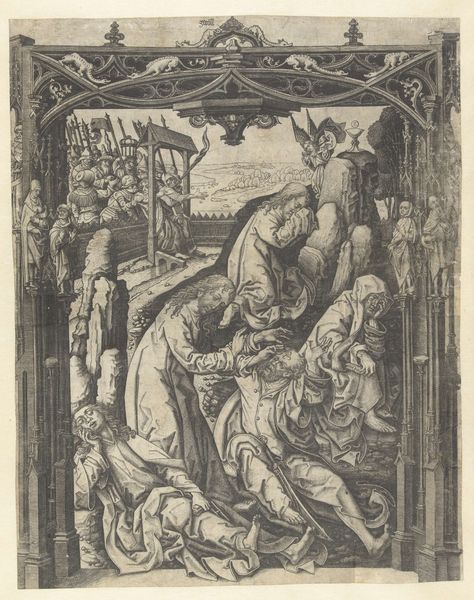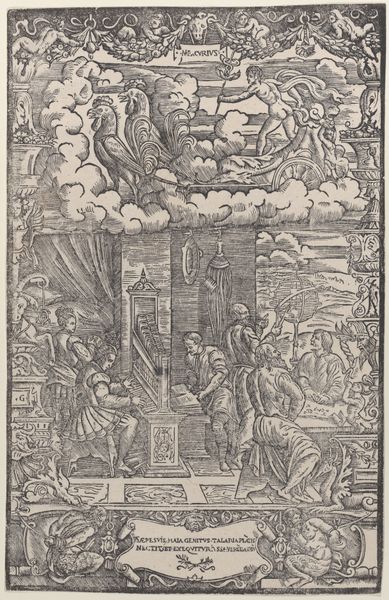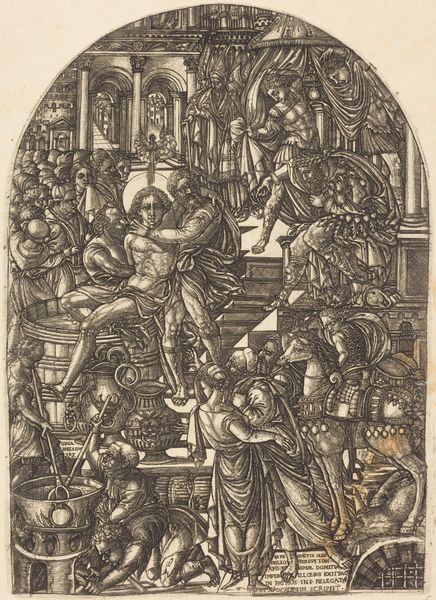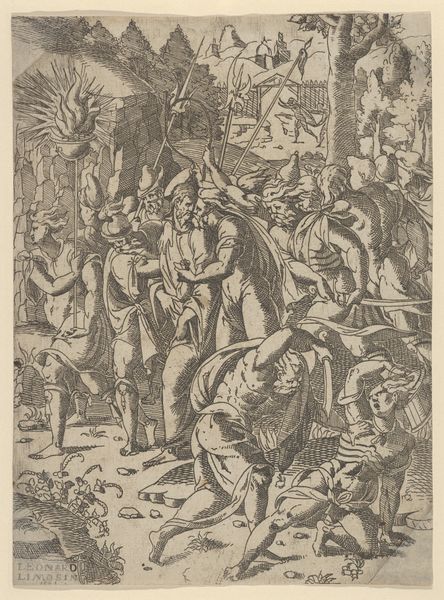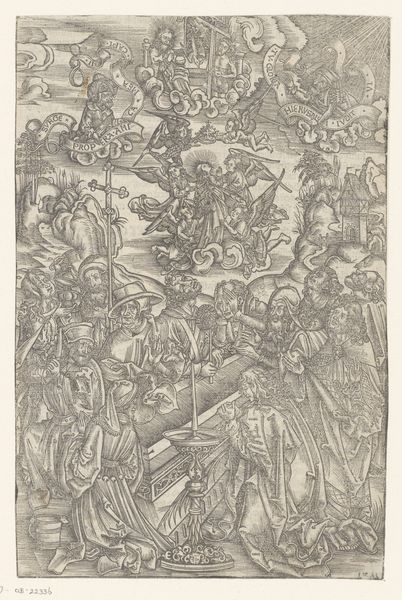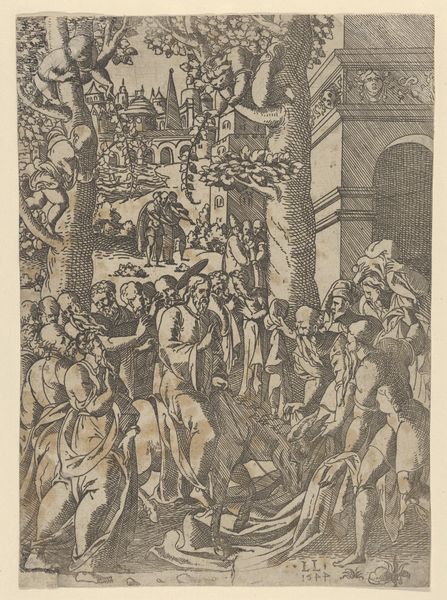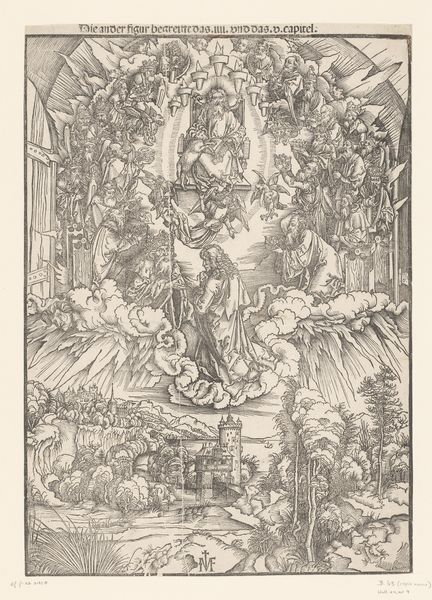
print, woodcut
#
medieval
#
narrative-art
# print
#
figuration
#
woodcut
#
history-painting
Dimensions: height 191 mm, width 136 mm
Copyright: Rijks Museum: Open Domain
Curator: Immediately, there's this compressed tension. A crowd pressing in, a lone figure kneeling… I sense power, vulnerability, ritual almost. Editor: Exactly. What we're looking at is a 1518 woodcut print, entitled “Man Kneeling Before a Prince." It’s currently attributed to Anonymous, but the precision suggests a trained hand well versed in this medium. The scene depicts, unsurprisingly, a man kneeling before a ruler figure surrounded by onlookers. Curator: I find the starkness compelling. The contrast is brutal. Just those sharp lines carving out shapes from the whiteness—it's almost confrontational. There is no softness. Everything seems hierarchical. Editor: This is entirely characteristic of printmaking from that era, of course, and indeed key to the work's historical context. As prints, works like these, typically mass produced and inexpensive, played a critical role in shaping and disseminating political and cultural narratives in ways not accessible to illuminated manuscript traditions, and it is clear here there is a social narrative. The act of kneeling is laden with meaning; submission, supplication, homage. But, consider how accessible that statement suddenly became. Curator: Absolutely! I can just imagine seeing copies posted, debated over meals... What narratives could be derived from the artwork based on the position that the social "gaze" is upon both figures— the knighting versus he who has been Knighted. Even those in-between are not absolved, due to their position above the "incident," so to speak! Is that an endorsement or disapproval from all involved? How wonderful the ability of "art" to create further engagement on the story's plot? It leaves one, rather, in silent, questioning mode, isn't it? Editor: Precisely. And how did that inform socio-political events? The reproduction and distribution of potent imagery inevitably shapes opinion in this way. Its aesthetic simplicity underscores its complex cultural significance. Curator: I find myself thinking about power and spectacle. It is still potent, even so long afterward! It’s stark, raw—uncomfortably compelling to viewers and listeners like us! Editor: It shows that this small print encapsulates major social and political dynamics of its time; its crude nature and stark contrasts speak volumes about art's role in reflecting power structures.
Comments
No comments
Be the first to comment and join the conversation on the ultimate creative platform.
